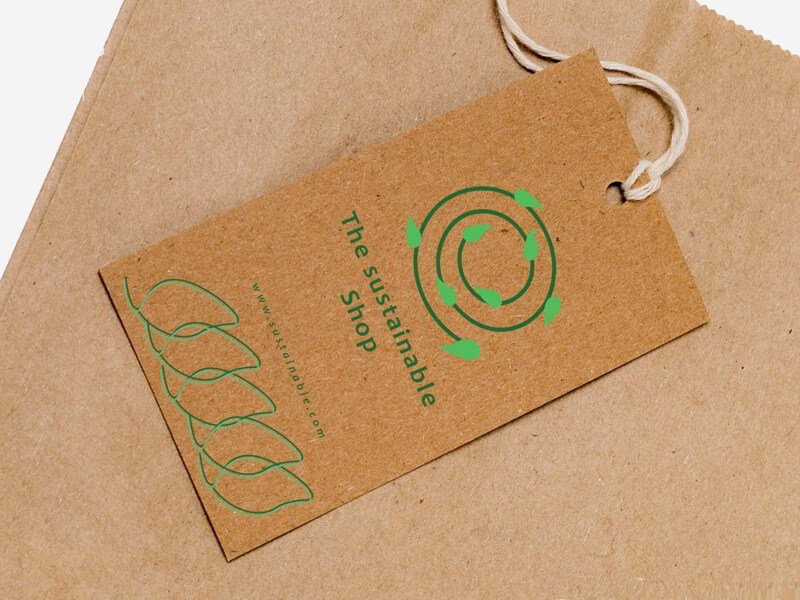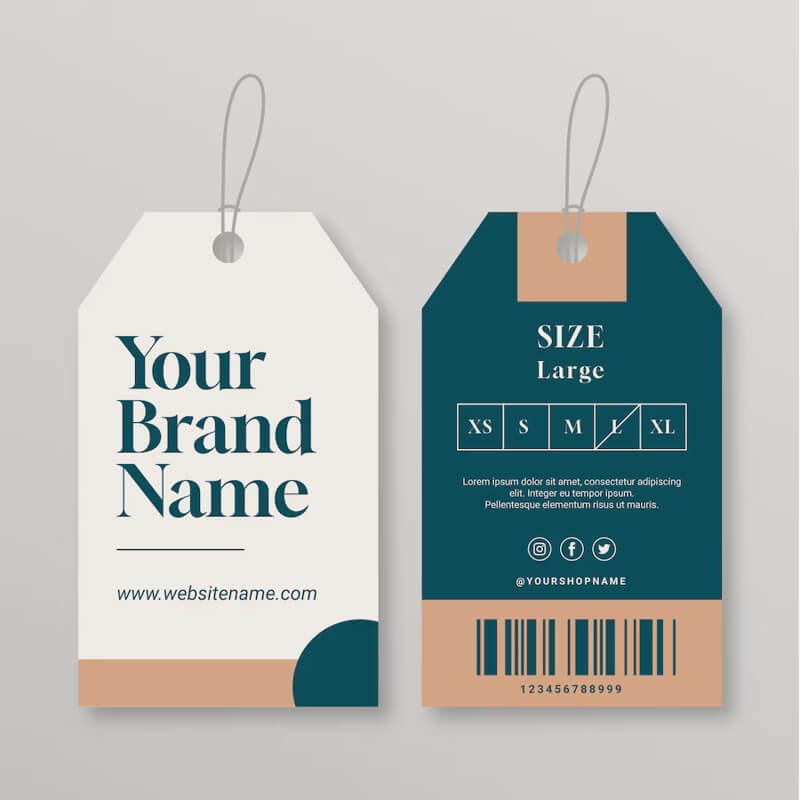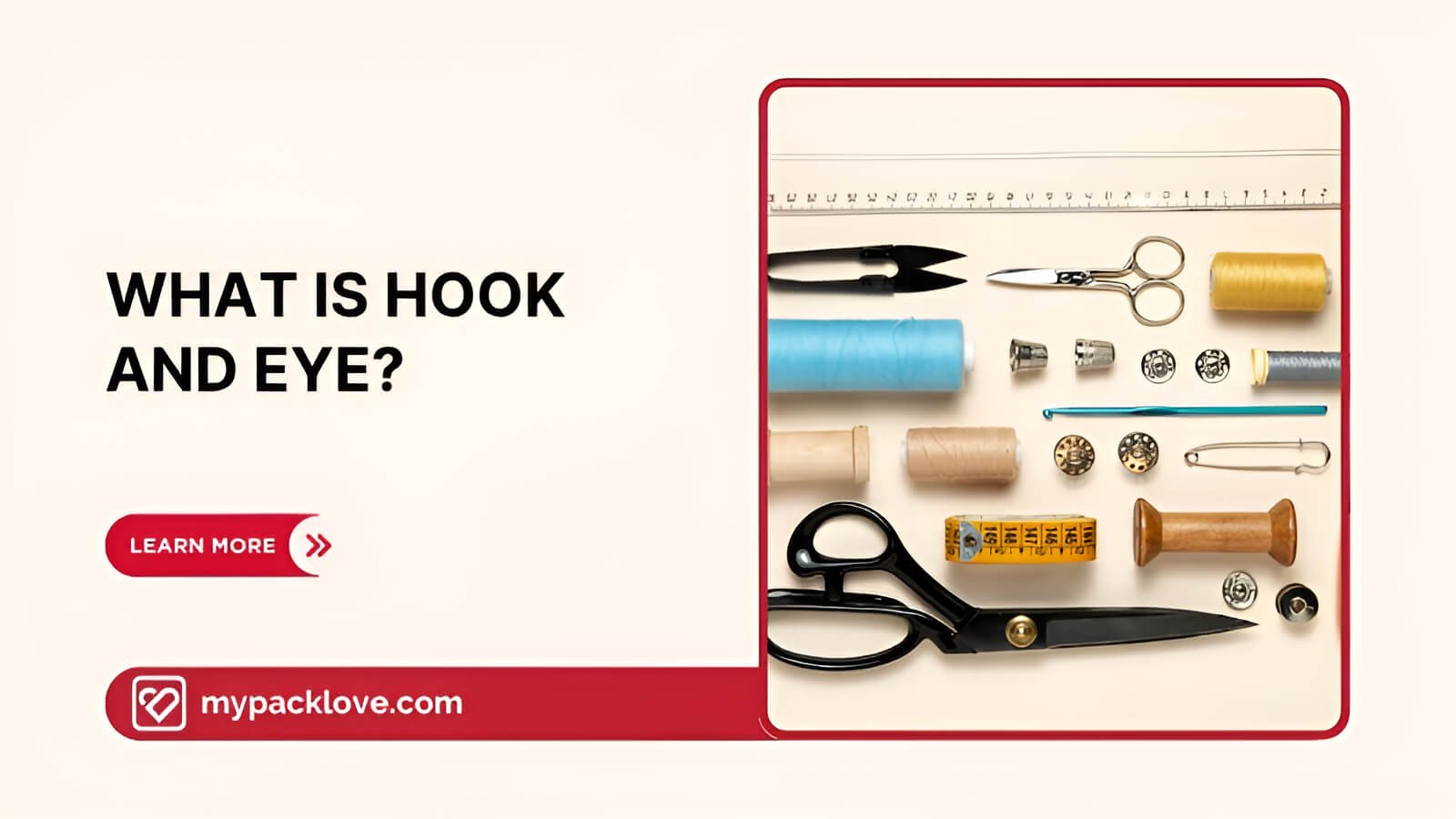Eco-Friendly Custom Hang Tags: Sustainable Branding for Your Products
Today’s eco-conscious consumers demand sustainability, even down to the hang tags on their clothing. As a brand committed to environmental responsibility, are you seeking hang tag options that align with your values? Are you unsure about eco-friendly materials, costs, or maintaining quality? Choosing the right hang tag material is a statement about your brand.
Non-sustainable options can harm your image and the environment. This guide empowers you to make informed choices. Discover eco-friendly materials for custom hang tags, learn to select the best option for your brand and budget, and gain design tips for visually appealing, sustainable tags.
Make your hang tags a symbol of your brand’s commitment to a greener future. Let’s explore how to create hang tags that are both beautiful and environmentally responsible.
1. Why Choose Eco-Friendly Custom Hang Tags?
Choosing eco-friendly hang tags is a strategic decision with significant benefits:
- Environmental Impact: Reduce waste, lower your carbon footprint, and conserve resources by using recyclable, biodegradable, or compostable materials.
- Enhanced Brand Image: Appeal to eco-conscious consumers, demonstrating your commitment to sustainability and ethical sourcing. This builds a positive brand perception and fosters customer loyalty.
- Marketing Differentiation: Stand out from competitors by highlighting your sustainable practices. Eco-friendly hang tags are a tangible representation of your green values.
- Regulations: Comply with increasing regulations that encourage businesses to go green.
- (Statistics): Consumers increasingly prefer and are willing to pay more for sustainable brands. This translates to customer loyalty and potentially lower long-term costs through waste reduction.
Choosing eco-friendly hang tags is both environmentally responsible and a smart business move.

2. Eco-Friendly Materials for Custom Hang Tag Design
2.1 Recycled Paper and Cardstock
Recycled paper and cardstock are excellent starting points for eco-friendly hang tags. Look for paper made with a high percentage of post-consumer waste (recycled from used paper products) rather than pre-consumer waste (scrap from the manufacturing process).
Certifications like FSC (Forest Stewardship Council) and SFI (Sustainable Forestry Initiative) indicate responsible forestry practices. Recycled paper comes in various weights (thicknesses) and finishes, from smooth to textured. Recycled paper is a great starting point for eco-friendly hang tags. Look for high post-consumer waste content.
2.2 Plantable Seed Paper
Plantable seed paper offers a truly unique and impactful branding opportunity. This special paper is embedded with seeds (wildflowers, herbs, or even vegetables). After use, the hang tag can be planted in soil, and the seeds will germinate, growing into plants. This not only minimizes waste but also actively contributes to biodiversity.
Seed paper is a great option for brands that want to make a strong statement about their commitment to sustainability.
2.3 Kraft Paper and Other Natural Materials
Kraft paper, with its characteristic brown, unbleached appearance, is a popular choice for eco-conscious brands. It’s often made from recycled content and has a natural, rustic aesthetic. Other sustainable options include bamboo paper (made from rapidly renewable bamboo), cotton paper (made from cotton linters or recycled cotton fabric), and hemp paper (made from durable hemp fibers).
Kraft paper provides a natural, rustic look that is popular with eco-conscious brands.

2.4 Alternative and Innovative Materials
Beyond the more common options, explore these innovative materials:
- Recycled Textiles: Hang tags can be created from recycled fabric scraps, giving new life to textile waste.
- Mushroom Packaging: Certain types of mushroom packaging are strong and compostable, though their suitability for hang tags would need to be confirmed.
- Stone Paper: Is made from a combination of mineral powder (>80%) and a small amount (<20%) of non-toxic resin.
Consider the innovative materials for the most striking impression on customers.
2.5 Sustainable Inks and Printing
The environmental impact of your hang tags extends beyond the paper itself. Sustainable printing practices are crucial.
- Inks: Opt for soy-based, vegetable-based, or water-based inks. These inks are made from renewable resources and have lower levels of VOCs (volatile organic compounds) compared to traditional petroleum-based inks. Non-toxic inks are essential for ensuring safety and minimizing environmental harm.
- Digital Printing: Digital printing is particularly well-suited for custom hang tags. It allows for small-batch, on-demand printing, which reduces waste by eliminating the need for large print runs and excess inventory.
- Laser Cutting: While laser engraving is possible, for hang tags, the best use case is probably to use for the unique custom shape (not print).
- Carbon Neutral: Consider partnering with printers who are committed to carbon-neutral operations, offsetting their carbon emissions.
Always ask printers about their specific ink options, sustainability certifications, and printing processes.
3. Designing Your Eco-Friendly Hang Tag: Step-by-Step
3.1 Incorporating Sustainability into Your Design
Your hang tag’s design is an opportunity to visually communicate your brand’s commitment to sustainability. Consider these elements:
- Natural Color Palettes: Embrace earth tones, greens, browns, and other colors inspired by nature.
- Minimalist Design: A clean, uncluttered design not only looks modern and sophisticated but also reduces ink usage, minimizing environmental impact.
- Eco-Friendly Icons: Incorporate recognizable symbols to indicate recyclability, compostability, or other relevant eco-attributes of the tag.
- Transparency: Clearly state the sustainable materials used in your hang tag (e.g., “Made with 100% post-consumer recycled paper”).
Let your design reflect your brand’s commitment to sustainability, reinforcing your message and values.

3.2 Choosing the Right Design Software (or Hiring a Designer)
You have several options for creating your hang tag design:
- Professional Software: Adobe Illustrator and Adobe Photoshop are industry-standard design programs, offering powerful tools for creating vector graphics and manipulating images. However, they have a steeper learning curve.
- User-Friendly Alternatives: Canva is a web-based design platform that’s much easier to use, offering a wide range of templates and design elements, including options suitable for hang tags.
- Hiring a Freelance Designer: If you lack design experience or want a truly professional result, consider hiring a freelance designer. Platforms like Fiverr and Upwork connect you with designers who specialize in various styles, including sustainable design. Look for designers with experience in eco-friendly branding and packaging.
Unless you have design experience, starting with Canva or hiring a designer is recommended for achieving a polished and professional look.
3.3 Creating Your Design Layout
Follow these steps to create your hang tag design:
- Set up the document: Create a new document in your chosen software, setting the correct dimensions for your hang tag (including any bleed area required by the printer). Bleed is extra space around the edges of your design that will be trimmed off, ensuring no white edges appear after cutting. Also, define a safe area within the trim lines, keeping all important elements (text, logo) inside this area to avoid them being cut off.
- Place the logo and key information: Position your logo prominently. Include essential information like your brand name, website, and any required legal text (country of origin, care instructions, etc.).
- Choose fonts and colors: Select fonts that are legible and reflect your brand’s style. Use your chosen color palette, ensuring sufficient contrast for readability.
- Arrange elements for visual balance: Create a visually appealing layout, ensuring elements are well-spaced and easy to read. Avoid overcrowding the design.
- Use templates (if applicable): If using Canva or other template-based software, customize a pre-designed template to save time and ensure a professional look.
- Minimize Ink Coverage: When choosing colors and laying out elements, consider minimizing ink coverage where possible. Large areas of solid color require more ink.
Get feedback on your design from others before finalizing it.
3.4 Prepare the File to Print
- Choose the right color: You should choose CMYK
- Choose resolution: It should be at least 300 DPI for the best printing quality.
- Choose file types: AI, PDF, PSD, EPS, TIFF.
Should contact the printers for more detail before sending files.

4. FAQs about Eco-Friendly Custom Hang Tag Design
Eco-friendly hang tags can sometimes have a slightly higher upfront cost compared to conventional options. However, the price difference is often minimal, and the long-term benefits (positive brand image, customer loyalty, reduced environmental impact) often outweigh the initial cost. Additionally, some eco-friendly options, like kraft paper, can be quite cost-effective.
There’s no single “most” eco-friendly material; the best choice depends on your specific needs and priorities. Recycled paper (especially with high post-consumer waste content) is a great all-around option. Seed paper offers a unique and impactful statement. Kraft paper provides a natural, rustic aesthetic and is often made from recycled content. Ultimately, the most eco-friendly choice is the one that best aligns with your brand values and garment type.
To ensure your hang tags are genuinely sustainable:
- Look for certifications: Check for certifications like FSC or SFI, which indicate responsible sourcing and production.
- Ask questions: Don’t hesitate to ask your printer about the materials used, their origins, the printing processes, and their sustainability practices.
- Choose a reputable printer: Partner with a printer known for its commitment to eco-friendly practices.
4.4 Can I still have a high-quality design with eco-friendly materials?
Absolutely! Eco-friendly materials can be just as beautiful, durable, and versatile as conventional materials. Advances in sustainable printing and material technology mean you don’t have to sacrifice quality or aesthetics to be environmentally responsible. You can achieve stunning, high-quality hang tag designs with recycled paper, seed paper, kraft paper, and other eco-friendly options.
4.5 How can eco-friendly hang tag increase my sale?
Many customers actively seek out and prefer products from brands that demonstrate a commitment to sustainability. Using eco-friendly hang tags is a visible way to communicate your values, attract environmentally conscious consumers, and differentiate yourself from competitors. This can lead to increased brand loyalty, positive word-of-mouth, and ultimately, higher sales.
5. My Pack Love – Providing service for eco-friendly custom hang tag design
At My Pack Love, we understand the growing importance of sustainability in the garment industry. With over 8 years of experience specializing in labels and tags for clothing, we’re committed to providing eco-friendly packaging solutions that help brands reduce their environmental impact and enhance their brand image.
We offer a range of eco-friendly custom hang tag options, utilizing materials like recycled paper, seed paper, and kraft paper, combined with sustainable printing practices. Our team can guide you through the entire process, from selecting the best materials and design elements to ensuring your hang tags are produced to the highest standards of quality and sustainability.
Let My Pack Love help you create custom hang tags that not only look beautiful but also reflect your brand’s commitment to a greener future. Contact us today for a consultation and quote, and let’s discuss how we can bring your sustainable packaging vision to life https://mypacklove.com/.
Read more:
Choosing eco-friendly custom hang tags is a powerful way to demonstrate your brand’s commitment to sustainability, resonate with eco-conscious consumers, and make a positive impact on the environment. The benefits extend beyond environmental responsibility, enhancing your brand image, attracting loyal customers, and potentially even reducing long-term costs.
By making the switch to sustainable hang tags, you’re not just choosing a better packaging option; you’re investing in a greener future and a stronger brand. Go green with your hang tags and make a difference! Contact My Pack Love to start designing your sustainable hang tags today!






















